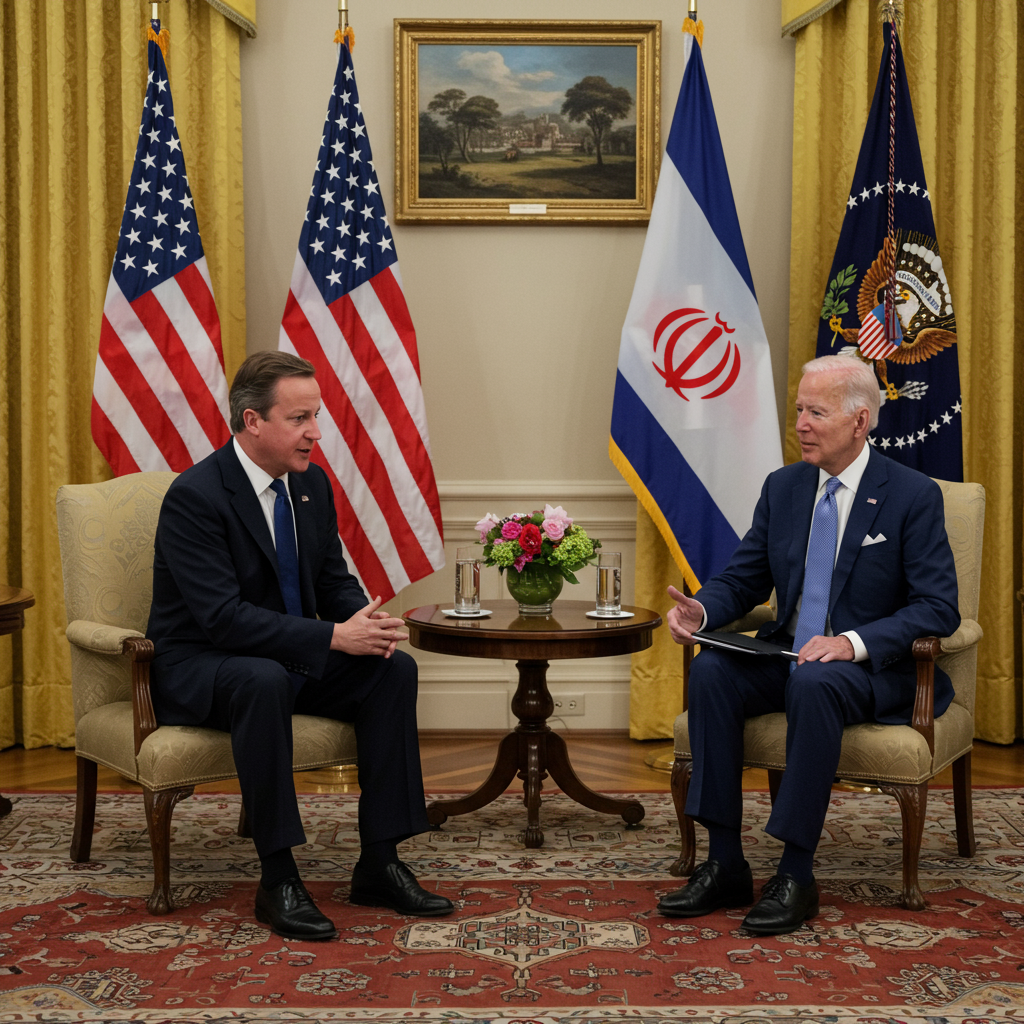The European Union has charted a complex course for its climate future, provisionally agreeing to slash carbon emissions by a formidable 90% by 2040. This pivotal decision, reached after an intense overnight debate among EU climate ministers in Brussels on November 4, 2025, sets the stage for the bloc’s position at the upcoming U.N. climate conference, COP30, in Brazil. While aiming to solidify Europe’s commitment to combating climate change, the agreement has sparked a fierce debate, with critics arguing it dilutes prior ambitions through significant compromises. This article delves into the specifics of the new targets, the contentious concessions, and what this means for global climate action.
A Landmark Agreement Forged Through Deep Divisions
After months of intricate negotiations and a marathon session, EU environment ministers finally solidified their commitment to a 90% reduction in greenhouse gas emissions by 2040, benchmarked against 1990 levels. This ambitious target forms a crucial part of the bloc’s journey toward carbon neutrality and signals its intent on the global stage. European Commissioner for Climate, Net-Zero and Clean Growth Wopke Hoekstra acknowledged the necessity of this climate action amidst current geopolitical and economic tensions.
However, the path to consensus was far from smooth. Three nations – Hungary, Slovakia, and Poland – cast dissenting votes against the agreement. Their opposition highlighted deep internal divisions and the economic anxieties some member states harbor regarding stringent climate regulations. Spain’s Environment Minister Sara Aagesen, however, framed the agreement as providing the EU with “leadership” to bring to the COP30 summit in Belem.
Key Concessions Shaping the Deal
To secure the necessary weighted majority for the 2040 target and unanimous consent for the accompanying 2035 Nationally Determined Contribution (NDC) – set between a 66.25% and 72.5% cut – several crucial compromises were incorporated:
International Carbon Credits: Member states gained flexibility to purchase international carbon credits to meet up to 10% of their 2040 emissions reduction targets. This provision allows countries to finance climate projects outside Europe, rather than solely cutting domestic emissions.
Biennial Reassessment Clause: The overall 2040 objective will be reassessed every two years. This clause provides an avenue to adjust the target based on evolving economic performance and geopolitical realities.
- Carbon Market Postponement: A central demand from Poland, the launch of a new EU carbon trading plan covering transport and heating sectors was delayed by one year, from 2027 to 2028. This move aims to alleviate concerns about immediate increases in fuel prices.
- apnews.com
- www.clickorlando.com
- www.dw.com
- www.theweek.in
- www.thehindu.com
These concessions were critical in bridging the gap between member states with differing economic situations and climate priorities. Danish leadership played a vital role in brokering these compromises, particularly in winning over skeptical nations like Italy. The EU has already cut its emissions by 37% since 1990, demonstrating its historical commitment, but the new agreement reflects a more pragmatic approach.
Environmentalists Cry “Carbon Laundering”
Despite the ambitious headline target, environmental advocacy groups have vehemently criticized the new agreement, arguing that the embedded compromises significantly undermine the EU’s true climate commitment. Thomas Gelin, a Greenpeace EU climate campaigner, explicitly labeled the provisions for international carbon credits as “offshore carbon laundering.” He asserted that this mechanism means “the EU’s own commitment is much lower, and that commitment means even less with a baked-in clause to dilute the target every two years.”
Jeroen Gerlag, Europe director at the nonprofit Climate Group, echoed this sentiment. He stated that while the 90% commitment stands “on paper,” its practical effect will be to “offshore some of its emission reductions – making it someone else’s problem.” These criticisms highlight a core concern: that allowing countries to buy credits internationally could reduce the incentive for deeper domestic emission cuts and potentially shift the burden of responsibility.
EU Officials Defend a “Necessary Compromise”
Conversely, EU officials defending the agreement emphasized its strategic importance and the necessity of pragmatic solutions. Swedish climate minister Romina Pourmokhtari praised the deal as “exactly the signal that Europe has to send in these times,” thanking Finland, Germany, Spain, and the Netherlands for their strong advocacy for ambitious cuts.
Wopke Hoekstra, the European Commissioner for Climate, Net-Zero and Clean Growth, acknowledged that achieving a unanimous front required some level of compromise. He stressed the importance of balancing climate action with essential goals of independence and competitiveness, particularly in the face of geopolitical and economic pressures. Hoekstra maintained that the agreement remains robust compared to those of allies in the Pacific, Europe, and North America, underscoring the EU’s continued commitment.
Navigating a Shifting Political and Economic Landscape
The backdrop to this climate deal is a complex and evolving political landscape within the EU. Since the 2015 Paris Agreement, many EU governments have seen a shift towards the right. This has fueled a contentious debate: some policymakers view stringent climate regulations as an impediment to economic growth, potentially shackling industries and increasing costs. Others argue that Europe must lead in developing and adopting green technologies, emphasizing that failure to do so risks dependence on countries like China for energy and sustainable products.
Simultaneously, Europe has experienced an alarming increase in extreme weather events, including devastating wildfires, intense heat waves, and severe floods. These events serve as a stark reminder of the urgency for decisive climate action. However, concurrent crises, such as Russia’s war in Ukraine and an increasingly volatile relationship with the United States, have intensified political and economic pressures. These factors have complicated the pursuit of flagship environmental policies, forcing a difficult balancing act between environmental imperatives and immediate economic and security concerns.
The EU’s Commitment in a Global Context
The EU’s 2040 target and 2035 NDC are critical components of broader global efforts under the 2015 Paris Agreement, which aims to limit the average global temperature rise to well below 2 degrees Celsius, ideally capping it at 1.5 degrees. Signatory countries committed to renewing and communicating their targets every five years.
Globally, progress on these submissions has been slow. UN Secretary-General Antonio Guterres noted that current national climate plans for 2035, if fully implemented, would reduce projected temperature rises from 2.6°C to 2.3°C. While acknowledging this as “progress,” Guterres emphatically warned it is “nowhere near enough,” stating that “current commitments still point to climate breakdown.” He urged nations to “step up and speed up,” reaffirming 1.5 degrees by the end of the century as the “North Star” and achievable with significantly increased ambition.
Major global emitters vary in their commitments. China, for instance, formally submitted targets in early November, pledging a 7-10% reduction from its peak emissions. While critics viewed this as insufficient, analysts suggest China is likely to meet or exceed it due to vast investments in solar power and electric vehicles, despite its continued reliance on coal. Melanie Robinson, director of global climate, economics, and finance at the World Resources Institute (WRI), confirmed that while the “transition is underway, progress is happening,” it is “not happening fast enough.” She stressed the urgent need for leaders to agree on a “decisive global response” to accelerate progress.
The Road Ahead for the EU Deal
Crucially, the agreement reached by EU climate ministers is not yet legally binding. Before it can be formally adopted, it must navigate further legislative hurdles. The European Parliament will need to vote on the proposals, and subsequent negotiations will take place with the European Council to finalize its contents. This multi-stage process means the details, and even the existence, of some provisions could still evolve before the targets become official, legally binding documents.
Frequently Asked Questions
What are the key details of the EU’s new 2040 emissions target?
The European Union has provisionally agreed to cut its greenhouse gas emissions by 90% by 2040, compared to 1990 levels. This target was reached after intense negotiations among EU climate ministers. Key compromises include allowing member states to use international carbon credits for up to 10% of their reductions, a clause for the overall objective to be reassessed every two years based on economic performance, and a one-year delay (until 2028) in implementing a new carbon trading plan for transport and heating. The agreement also includes a 2035 Nationally Determined Contribution (NDC) ranging from a 66.25% to 72.5% cut.
How do these EU targets fit into broader global climate action and the Paris Agreement?
The EU’s new targets are a crucial component of its commitment under the 2015 Paris Agreement, which aims to limit global warming to well below 2 degrees Celsius, ideally 1.5 degrees. While the EU has historically been a leader in climate action, these targets emerge in a global context where UN Secretary-General Antonio Guterres warns that current national plans are “nowhere near enough” to prevent “climate breakdown.” The agreement positions the EU to present its leadership at the upcoming COP30 summit in Brazil, though global progress on emissions reductions remains slow and ambitious action is still urgently needed from all major emitters.
Why are environmental groups criticizing the EU’s latest climate agreement?
Environmental groups, including Greenpeace and the Climate Group, are criticizing the EU’s new climate agreement due to several key compromises. They specifically point to the allowance for member states to purchase international carbon credits, which critics like Thomas Gelin of Greenpeace label as “offshore carbon laundering,” arguing it enables the outsourcing of the EU’s obligations rather than fostering deeper domestic cuts. They also express concern over the “baked-in clause to dilute the target every two years” and the postponement of the carbon trading plan, suggesting these provisions weaken the bloc’s genuine commitment and make climate action “someone else’s problem.”
Conclusion: A Balancing Act for Europe’s Climate Future
The European Union’s provisional agreement on a 90% emissions reduction target by 2040 represents a complex triumph of negotiation and compromise. It signals the bloc’s continued, albeit nuanced, commitment to climate action on the global stage, especially heading into COP30. However, the agreement highlights the profound challenges of balancing ambitious environmental goals with pressing economic realities and geopolitical tensions. While hailed by some as a necessary and pragmatic step forward, environmental critics view the concessions as a significant watering down of genuine climate ambition. As the agreement moves through legislative approvals, its true impact will depend on rigorous implementation and sustained political will, defining Europe’s role in the urgent race against climate change.




